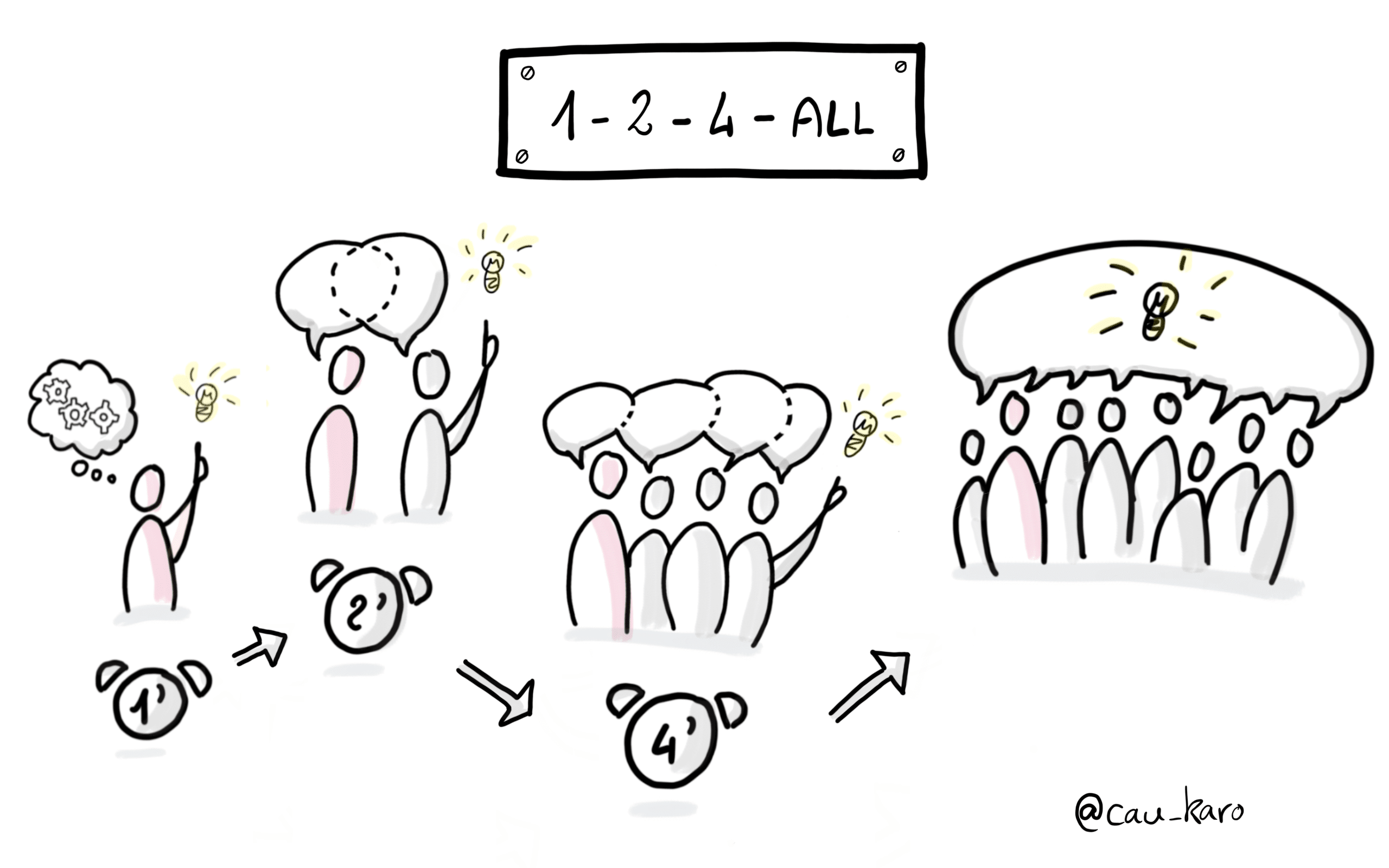As part of a scaled Agility approach, I now support a team of around 30 people. After a few days with them, I learned that they used to end their iterations with a session combining Review + Retrospective + Planning in 2 hours. Not being of a nature to want to break everything as soon as I arrived, I offered them to take the Retrospective part by time-boxing it at one hour maximum: it was a challenge that I had never taken up before and for once , which seemed particularly interesting to me.
I propose in this series of articles not one format but 3 retrospective formats that I used with this team in order to be able to meet the constraint: 30 people, 1 hour. There will be nothing exceptional in itself, just intentions and a reuse of the tools that we already know 🙂
Good reading !
In this series of articles:
- Retrospective 1: simplicity
- Retrospective 2: (coming soon)
- Retrospective 3: (coming soon)
Preamble – Finding

My mission start has arrived at the end of iteration for this team, which my faith, will have to undergo my company for the next few months. This means that a retrospective was planned: the opportunity for me to see the current situation of the team and how it could take shape.
Quite legitimately, the format used was simply to ask what worked well and what didn't work well in the team. Everyone therefore thought individually and then went in turn to explain their ideas listed on Post-it. Nothing too surprising so far.
The main problem is that to last 1 hour with this format and a good twenty people, it's far from ideal – and besides, it ended almost 2 hours later.
Indeed, one could easily imagine the following structure:
- (5′) Introduction: reminder of the rules of the game, the period concerned and the challenges of the session
- (5′) Instructions and material distribution
- (5′) Individual reflection
- (3′) Individual passage for explanation – multiplied by 20
- …
We have already exploded the timebox without having taken into account the potential exchanges and discussions, the emergence of options for improvement and the selection of actions for the next iteration. The rhythm is also rather soft, which is enough to largely anesthetize the group, preventing interactions from taking place in a natural way.
It was therefore necessary to do otherwise in order to make this moment of sharing more interactive and less restrictive.
Retrospective 1: Simplicity

For this first retrospective, I preferred to play the card of simplicity in order to be able to test the holding of the timing more than the originality of the format itself.
Preparation
- Post-its and markers placed in the room to limit the impact of logistics time
- Flipchart prepared with the 2 columns (element of satisfaction / idea for improvement)
- Stopwatch
Animation
(5′) Introduction
Establishment of the animation framework and reminder of the intentions of a retrospective.
(3′) Instructions for the mirror
Each person must give: 1 item he/she liked during this iteration and 1 idea for improvement.
(5′) Reflection time
(10′) Mirror debriefing
After the time has elapsed, I invite everyone to come and place their Post-its in the previously prepared columns on a Paperboard. I quickly go over each of the elements in the column of positive elements reported by the team and then facilitate understanding of the elements of the ideas for improvement.
(5′) Dot Voting
After having clarified each of the ideas for improvement and grouped together those that are very similar, we can proceed to a dot voting where I give everyone 2 points to distribute among the different options.
| Note: I ask that the 2 points be very distinct subjects for once, unlike what we can sometimes see where participants are authorized to put several points on the same element. Indeed, my intention is above all to rely on the group effect to see what will come out more than an influence of the individual on the result. |
(2′) Debriefing Dot Voting
Following the vote, I redo the accounts quickly and bring out the 4 subjects having obtained the maximum number of votes.
(15′) Work in sub-groups
I then propose to the participants to form 4 sub-groups in order to deal with each of the 4 subjects: we then obtain sub-groups of approximately 6-8 people.
I present the process 1-2-4-All to all the groups in order to structure their collective work. My role will mainly be to set the different sub-groups in motion by punctuating their thinking with the time boxes.
| As a reminder :
|
(15′) Debriefing Work in sub-groups
At the end of the allotted time (about 15 minutes), each sub-group will have 5 minutes to present the result of their reflection through mechanics:
- Who : person(s) taking responsibility for the action (belonging to the sub-group)
- What : description of the concrete action to be implemented
- When : temporality of implementation of the action
The session is then concluded.
Conclusion
The interest of this retrospective lies in its simplicity. We are not trying to evoke a mass of ideas for improvement that we will not deal with, but we limit ourselves to the essentials by asking for only one element per theme, per person.
In order to be able to put people in motion, we use the 1-2-4-all mechanics of Liberating Structures in order to be able to withdraw improvement actions that will not be taken care of by a single person as may be the case. in the usual retrospectives to less than 10 people but by a team.
As with every event that brings together a lot of people, facilitation and timeboxing is essential in order to keep the timing as well as the objectives. This retrospective was no exception! 😛
My intentions for this first retrospective were:
- of maximize interactions between people from different professions (mainly Business Analysts and Developers but also project managers and other stakeholders present)
- to force the prioritization limiting options whenever possible
- create a dynamic implementation by training responsible teams
I will offer you in the next article a second format that I used later, with a slightly different intention!
Stay Tuned! 😉








One Response
Hello Oliver,
I confirm the effectiveness of this method and I thank you once again for this feedback.
Another thank you for this beautiful sharing so that all scrum masters or agile coaches can use it, very good method that I highly recommend.
Good luck.
Hope to see you.